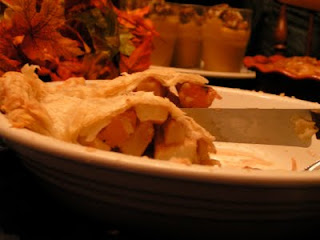
Been on an obvious
quince kick lately. And when it comes to fruit, I Jane Grigson's
Fruit Book never lets me down. She suggests a quince jelly where one chops the less handsome fruit into small pieces and reserves the nicer quince for slicing.

This pot (above) is filled with chopped whole quinces, then the cores and skins of the nice quinces, and then finished with the elegant quince slices. I also added four star anise, a few allspice berries, a sliced lemon and a half vanilla pod.

Once poached and soft, they are removed.

The rest comes to a hard boil and is mashed up. Once very soft, it gets passed through jelly cloth. I used a food mill and then a conical strainer to extract more, giving a more jamlike texture.

That gets cooked with the sliced quince and 2¼ cups of sugar for each 2 cups of liquid (before adding the slices).

Cook until it jells when placed on a cold plate. This happened around 220º, similar to a marmalade.

I processed these in a hot water bath for six minutes (always use
Putting Food By as a reference). Nice texture, softer than membrillo, but more coarse than jelly. Very good. And star anise was a good idea. It's subtle, but highlights the quince flavor.




































